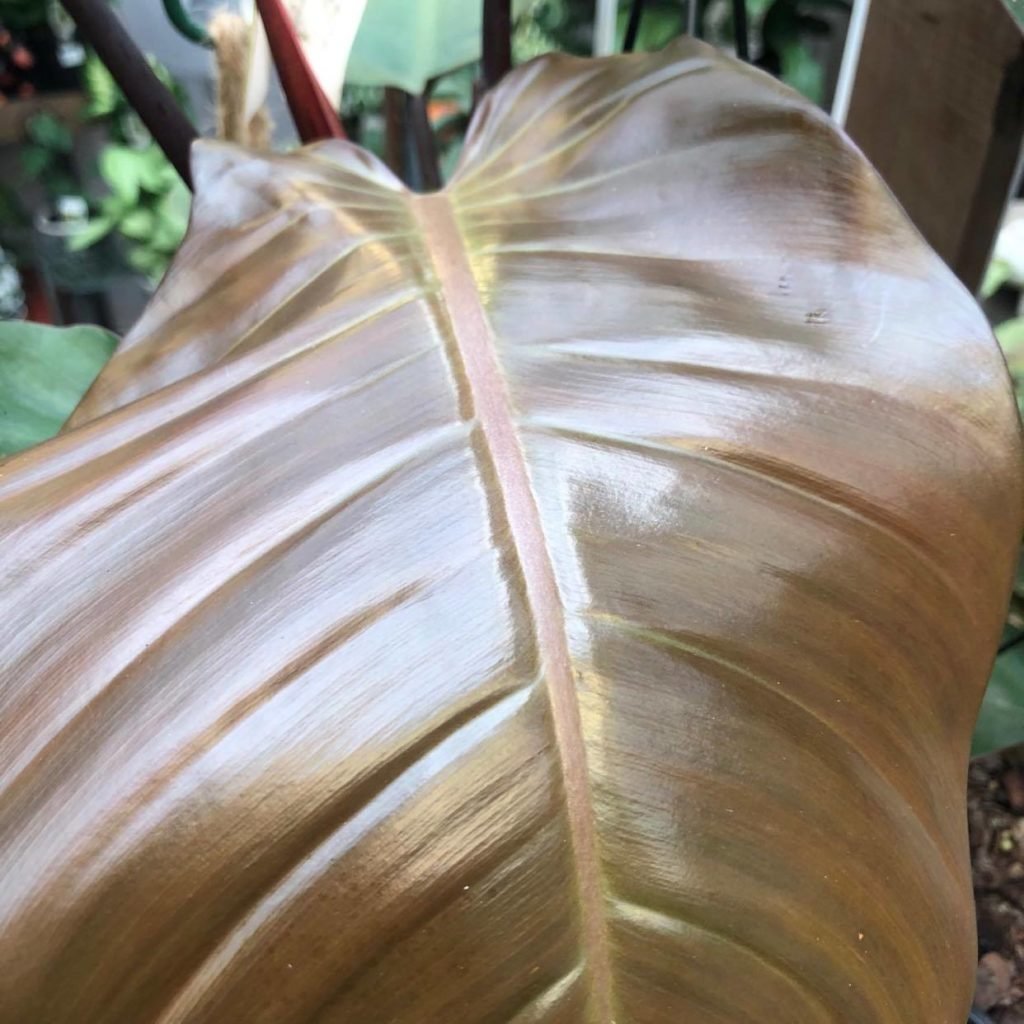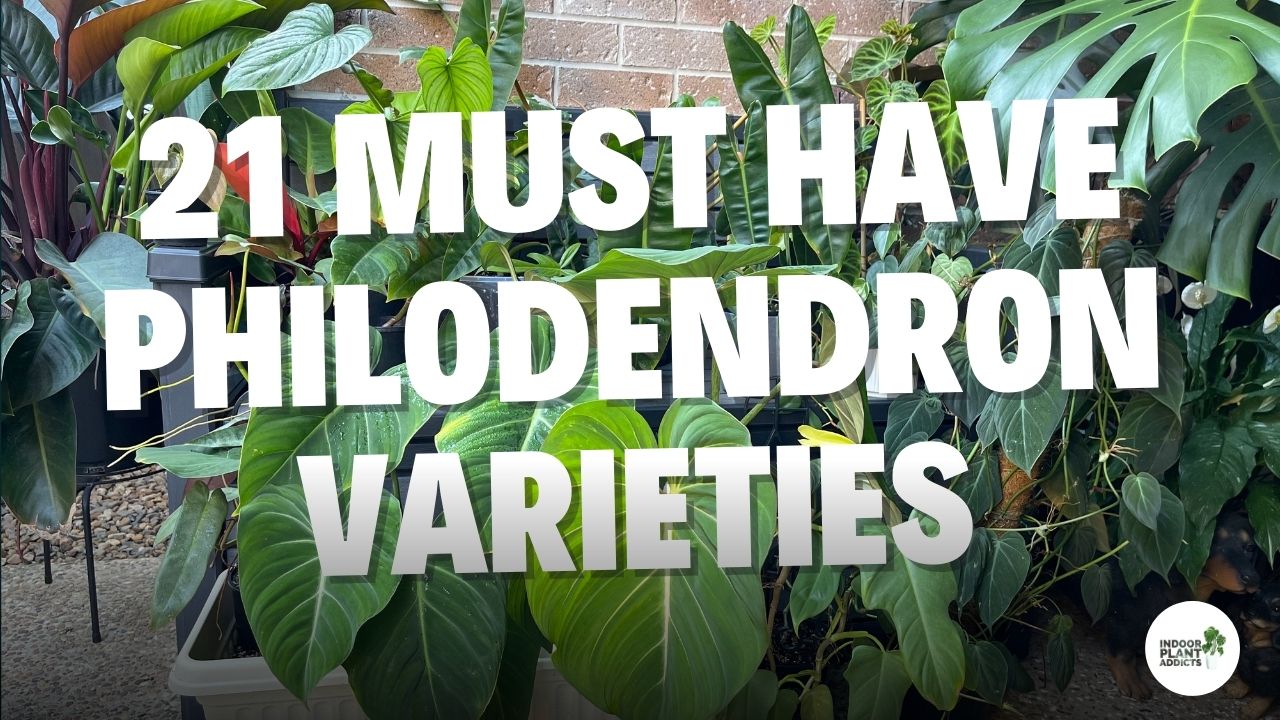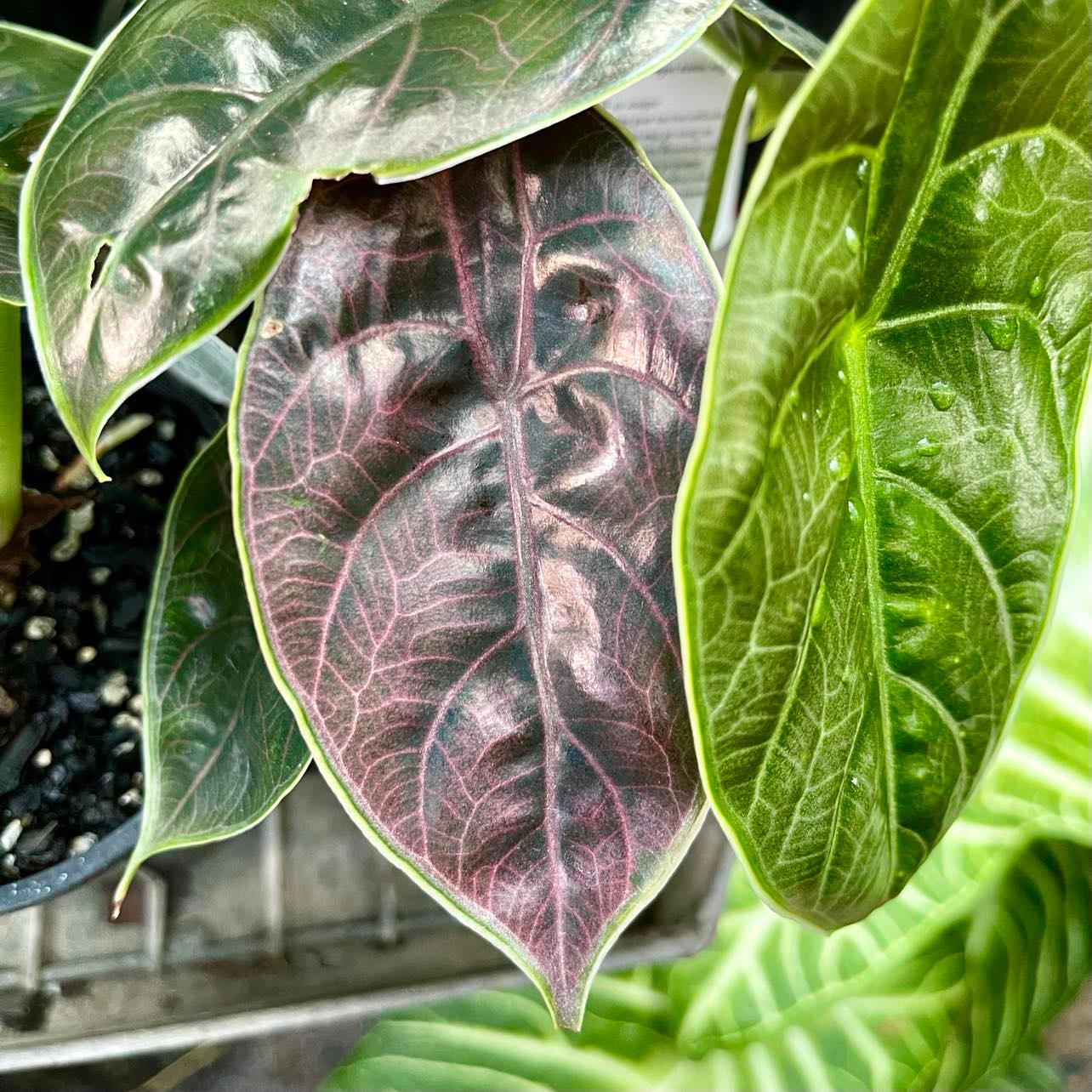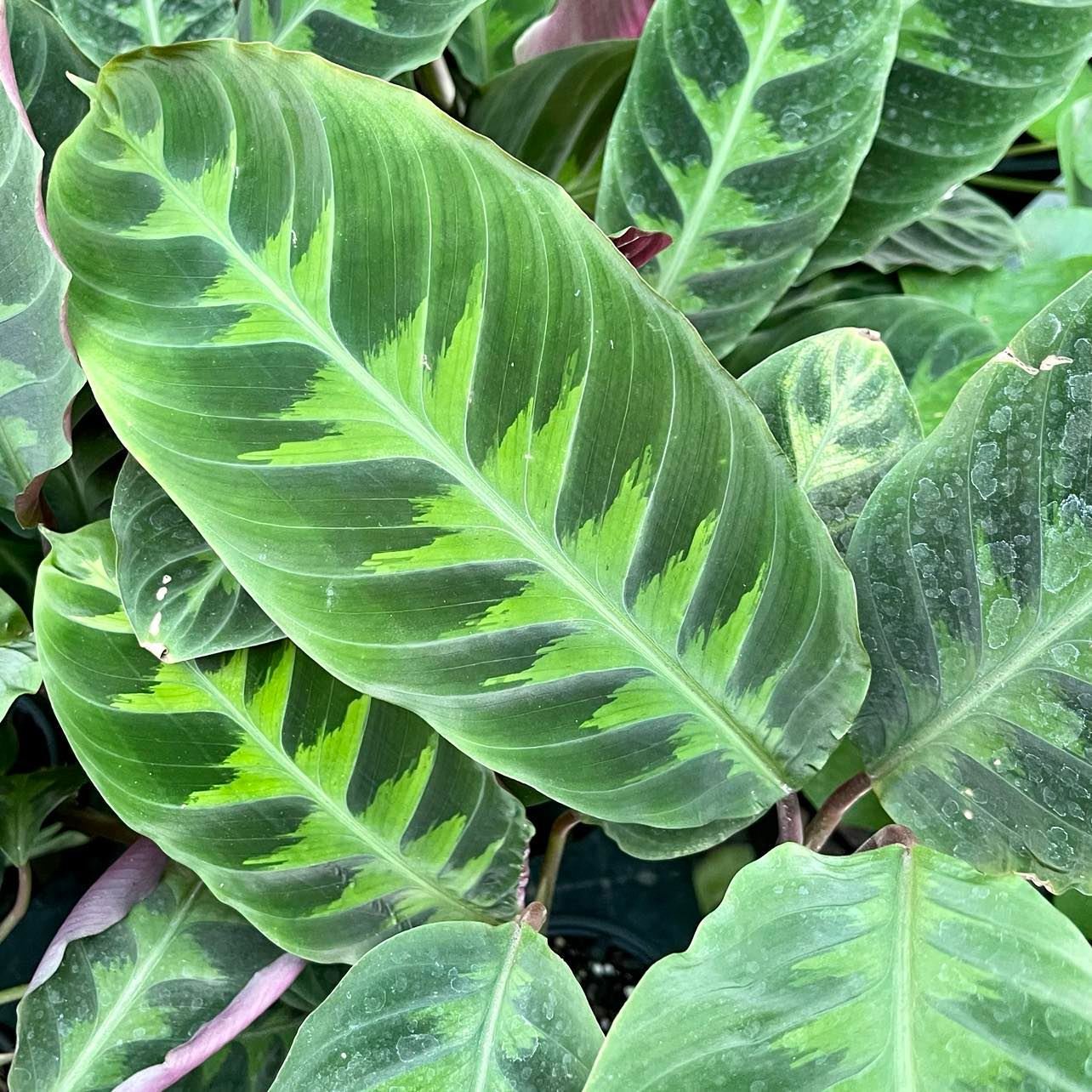Philodendron ‘Autumn’ aka. Copper Birds Nest Philodendron

Autumn Philodendron Quick Overview
| Full Size | 80cm+ |
| Light | Bright indirect light |
| Temperature | 50-80˚F (12-27˚C) |
| Humidity | 40% + |
| Cost | $ |
| Care Level | Easy |
| Toxicity | Toxic |
Autumn Philodendron boast amazing large glossy, copper/ bronze colored foliage. Mature leaves will begin to transform to a mild green. Although they aren’t as rich in color to that of their black cardinal cousins, they definitely should not be dismissed as a viable house plant choice. Autumn philodendron tend to offer great value for money.
Size
You can expect for your philodendron to reach a full grown height of 80cm +.
Light Requirements
Your autumn philodendron will perform best when positioned in bright indirect light. Signs that your autumn philodendron is getting not enough light is its leaves remaining green in color and not turning a bronze-copper color. This can be resolved by changing the position of your plant to somewhere with greater filtered light.
Temperature
These philodendron prefer moderate ambient temperature conditions and will thrive when kept in an area which maintains a temperature range of 50-80˚F (12-27˚C). When keeping your plant outside of this temperate bracket for prolonged periods of time you can expect it to develop health issues or seize growing.
Humidity
This particular Philodendron will grow and perform best in humidity levels above 40%, providing a higher humidity will assist with new growth. For tips on how you can increase humidity make sure to read our humidity tips for indoor plants.
Watering Requirements
You should water your Philodendron once the top inch of soil feels dry. When watering your plant be sure to water the entire surface to help prevent leaf problems from dry soil spots. Aside from solely relying on the watering frequency to tell when your plant is thirsty, like other philodendron a tell tale sign that your Autumn Philodendron needs water is drooping leaves. Just be cautious as drooping leaves can also be a sign of over-watering.
Fertilizing requirements
Your Autumn Philodendron should be fertilized with a slow release type fertilizer in it’s growing period (spring and summer). This will assist in keeping your plant alive as well as promote healthy growth. If your Autumn philodendron is not producing any new growth there is no need to fertilize, this may be an indication of poor plant health or incorrect positioning.
Soil Requirements
Your autumn philodendron will grow best and prefer well draining soil, with an consistent spread of water. We typically use a premium indoor plant potting mix from our local garden supply center and add perlite to the mix at a rate of 9:1 (soil to perlite).
Diseases & Pests
The most common pests that you can encounter whilst caring for your philodendron are aphids and mealybugs. Other common diseases that can affect philodendron is Erwinia Bligh. For a wide range of information on combating a large range of indoor plant diseases and pests see all pests and diseases.
Toxicity
Like most philodendron, autumn philodendron are considered to be toxic if ingested to humans and animals. All philodendron plants contain calcium oxalate crystals which are toxic to both humans and animals. Symptoms include a burning sensation and swelling of the lips, mouth, throat and tongue.
Please seek urgent medical attention if symptoms occur and you have difficulties breathing.




